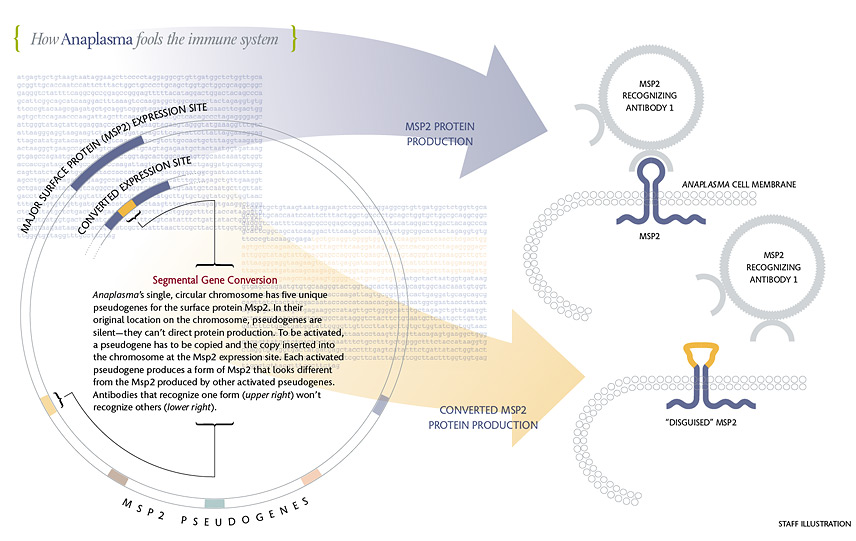 |
| Msp2 changes form when a silent pseudogene is copied and the copy is plugged into the expression site, displacing the pseudogene copy that had been there. Once it is installed in the expression site, a pseudogene is able to create its version of Msp2, whose middle loop differs from the loop in the previous Msp2. Antibodies that recognized the original Msp2 can't recognize the new form, so Anaplasma cells that are making the new form thrive. It takes the immune system a few weeks to make antibodies against the new Msp2. By that time, another gene conversion event has occurred and a third form of Msp2 is on the scene. If gene conversion involved only whole pseudogenes, Anaplasma would be able to make just five versions of Msp2—not enough to escape attack by the host's immune system for years. The incredible variety of Msp2 comes about because the pseudogenes can mingle. Guy Palmer and Kelly Brayton found that slivers of up to four pseudogenes can be combined at the expression site. Each combination creates a form of Msp2 that's different from previous forms—different enough so that antibodies that recognized earlier forms won't recognize the new one. Palmer estimates that the system enables Anaplasma to make at least 1,024 different versions of Msp2. |